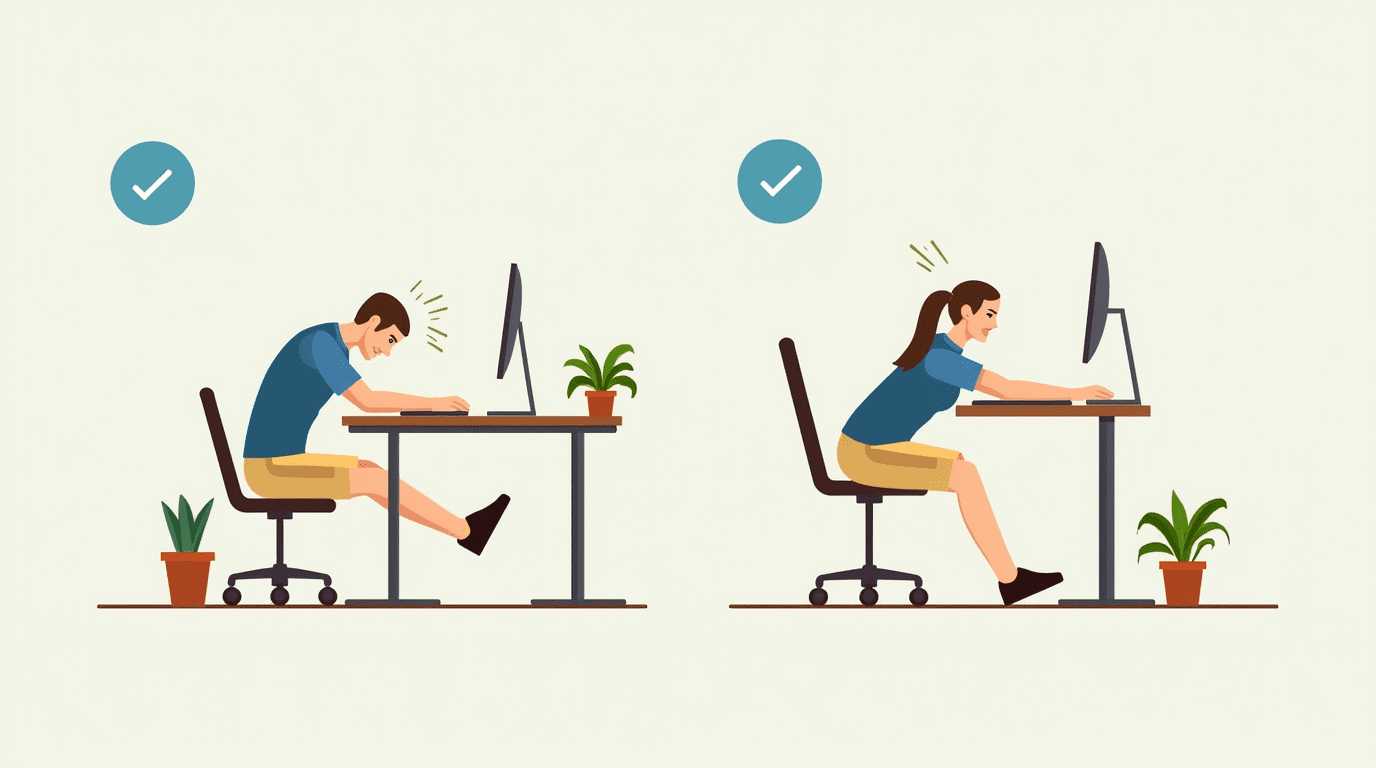How to Stretch Shoulders at Work to Relieve Tension and Improve Mobility
Introduction
Imagine wrapping up another long day at your desk, feeling as if a weight has settled on your shoulders. Tension builds from hours of staring at a screen, your shoulders creeping up toward your ears. You’re not alone; many people experience similar discomfort as they grind through their workdays.
As someone who has navigated a bustling office environment, I can attest to the overwhelming nature of modern work. Yet, amid our responsibilities, we often neglect the basic need to care for our bodies. It’s crucial to prioritize your well-being, especially in settings where stress is inevitable. In this article, you will find effective stretching techniques that you can seamlessly integrate into your work routine. Let’s explore how these small actions can lead to significant improvements in your shoulder health, mobility, and overall productivity.
The Importance of Shoulder Mobility in the Workplace
Understanding Shoulder Tension
Shoulder tension typically refers to the tightness or stiffness felt in the shoulder area. It often stems from various factors such as poor posture, prolonged sitting, and the pressure of daily stress. Studies indicate that, on average, a person spends approximately 6.5 hours a day sitting at their desks, which contributes greatly to physical discomfort.
When you’re seated for long periods, your shoulder muscles may tighten, leading to discomfort and even pain that can distract you from your tasks. Such distress is a physical manifestation of stress, reminding us of the importance of maintaining our well-being amidst the hustle of daily responsibilities.
The Benefits of Stretching Shoulders Regularly
Incorporating shoulder stretches into your day can significantly enhance your well-being. Here are several benefits:
- Increase in Blood Circulation: Stretching improves blood flow to your muscles, nourishing them and supporting recovery.
- Enhanced Range of Motion: Regular stretching helps maintain the flexibility of your shoulder joints, allowing for smoother movements.
- Stress Relief and Improved Mood: Engaging in physical activity such as stretching helps release endorphins, which invigorate your mood.
- Boosted Productivity and Mental Clarity: Research from sources like the Harvard Business Review shows that regular movement can sharpen your focus and enhance problem-solving capabilities.
Key Shoulder Stretches for the Office

Quick and Effective Stretches
Neck Stretch
Instructions: Gently tilt your head to one side, aiming to touch your ear to your shoulder. Hold this position for 15-30 seconds on each side.
Key Point: This stretch effectively relieves tension in the neck and upper shoulders.
Shoulder Shrugs
Instructions: Raise your shoulders up towards your ears, hold for a few seconds, and then release. Repeat this motion 10 times.
Key Point: Shoulder shrugs are excellent for reducing tightness in your upper shoulder area.
Cross-Body Shoulder Stretch
Instructions: Bring one arm across your body, using the opposite hand to gently pull it closer. Hold for 15-30 seconds on each side.
Key Point: This stretch targets the shoulder and upper back muscles, promoting relaxation.
Doorway Stretch
Instructions: Position your arms at a 90-degree angle against the door frame and gently lean forward. Maintain this position for 15-30 seconds.
Key Point: This stretch opens up the chest and effectively stretches the shoulders.
Incorporating Shoulder Stretches into Your Workday
Creating a Stretching Routine
To reap the benefits of these stretches, consider adopting a routine. Here are some tips:
- Best Times to Stretch: Aim to stretch every hour or during breaks between tasks.
- Set Reminders: Use your phone or calendar to prompt you to take stretching breaks.
- Utilize Transitions: Incorporate stretches during transitions between meetings or when waiting for the next task.
Advocating for a Culture of Movement
Encouraging a movement-friendly workplace can enhance overall employee well-being. Here’s how you can help:
- Promote Group Stretch Sessions: Initiate stretch gatherings during break times to encourage team participation.
- Speak with Leadership: Advocate for policies that promote physical activity in the office.
Additional Strategies to Maintain Shoulder Health
Ergonomics and Posture Tips
Proper ergonomics is essential for maintaining shoulder health. Here are a few adjustments you can make:
- Adjust your chair height so that your elbows are at a 90-degree angle when typing.
- Position your monitor at eye level to prevent straining your neck.
- Use a keyboard that encourages a neutral wrist position to reduce strain.
- Consider incorporating standing desks if feasible.
- Rearrange your workspace to enhance posture and reduce the need for reaching.
Lifestyle Modifications
In addition to workplace changes, adopting a healthy lifestyle can further support shoulder health:
- Regular Exercise: Engage in activities outside of work that promote overall fitness and flexibility.
- Yoga and Mindfulness: Explore yoga classes or mindfulness exercises, which aid in relaxation and body awareness.
Conclusion
Incorporating shoulder stretches into your workday can yield immense benefits for your physical and mental well-being. By addressing shoulder tension through simple stretching techniques, you can experience reduced discomfort, improved mobility, and enhanced productivity.
Take that first step today—integrate these stretches into your daily routine! Remember that maintaining shoulder health is not just about feeling good; it’s crucial for your overall well-being and effectiveness at work. We invite you to share your experiences with stretching or any other strategies that have worked for you in the comments below. Your insights may inspire others on their path to a healthier work life.



